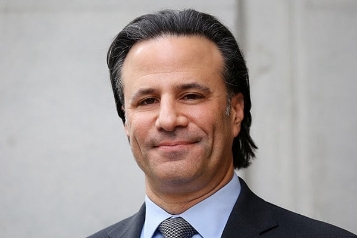
By Adam Epstein | NACD Directorship | May/June 2014
Scott Kupor is managing partner at Andreessen Horowitz, one of the most prominent venture capital firms in Silicon Valley. Prior to Andreessen Horowitz, Kupor was vice president and general manager of Softwareas-a-Service at Hewlett-Packard. Kupor joined HP in 2007 as part of its acquisition of Opsware, where he was senior vice president of customer solutions. Previously he represented software companies in both financing and mergers and acquisitions transactions at Credit Suisse First Boston and Lehman Brothers. Kupor graduated Phi Beta Kappa from Stanford University with a bachelor’s degree in public policy. He also holds a law degree with distinction from Stanford University and is a member of the California Bar Association.
Congressman David Schweikert (R-AZ) introduced the Spread Pricing Liquidity Act in May 2013, also known as the “tick size bill.” What are the problems that this bill is designed to address?
The fundamental issues we are trying to address with tick size reform are the lack of small-cap initial public offerings and therefore the lack of economic job creation. We used to consistently have 300 plus initial public offerings (IPOs) annually, with the vast majority of them for companies with less than $50 million in annual revenue and market capitalizations of less than $500 million. In the past 15 years we’ve been averaging closer to 100 IPOs a year, with nearly all of them coming from companies that are significantly larger in terms of both revenue and market cap. Much of this is a function of poor trading liquidity in the small-cap market. This illiquidity has caused institutional investors to largely abandon this segment of the market. (Approximately 80 percent of the stockholders of small-cap stocks are individual investors.) As a result, it’s fundamentally unattractive to be a small-cap issuer—raising additional capital in the public markets is a tall order when you lack institutional sponsorship. We also know that small-cap companies increase their hiring significantly when they go public, so the more we can do to foster a healthy smallcap IPO market, the more we can generate meaningful job growth.
The tick size issue has galvanized the small-cap ecosystem. How would you characterize the competing viewpoints?
I think there are two fundamental debates going on here. First, the one advocated by supporters of tick size reform (myself included). We believe that increasing tick size and restricting the increments at which stocks can trade—to the bid, ask, and mid-point of the spread—will bring institutions into the market and thus facilitate greater liquidity and ultimately more IPOs. Our fundamental belief is that sub-penny increments in the small-cap market discourage investors from showing any meaningfully sized trade interest for fear of being traded away from with sub-penny price improvements.
Suppose an institution were to post an offer to sell a lot of 1,000 shares of a small-cap stock at the price of $5. Under the current trading regime, another market participant can quickly “step in front” of that order at virtually no cost by offering to sell shares in the same company at a price that can be as little as one-tenth of a penny lower than the $5 ask. Moreover, the trader who is “stepping in front” can execute the trade off-exchange with an incoming order from one of his customers, thereby precluding the original price setter from having its original advertised trade executed. To defend against the scenario above, many institutional investors and traders now break their large blocks into many smaller lots in order to appear to the market as non-institutional traders. This practice adds extra time and cost to the process of accumulating or exiting significant positions in small-cap stocks, and reduces liquidity in the market.
The competing view is being advocated by both large retail brokerages and consumer advocacy groups—that increases in tick size will just mean higher trading costs for individual or retail investors. I believe that the increase in liquidity and thus the reintroduction of institutional investors in this market will ultimately benefit retail investors through greater stock appreciation. (We know that more liquid stocks trade on average at higher valuations.) I also believe that the real opposition from retail brokerages is a result of their concerns over losing payments for order flow that they generate from “internalizers,” and the potential that a tick size pilot program could invite scrutiny more generally in the broader non-small-cap market.
It turns out that in nearly all cases when you place a retail stock trade order, the retail brokerages don’t actually execute the trade themselves. Rather, they sell those orders to other institutions commonly referred to as internalizers, which pay the retail brokers as much as $0.32 per 100 shares traded—a practice known as “payment for order flow.” Under the current tick rules, payment for order flow thrives because the internalizers take virtually no trading risk (because they can price-improve at fractions of a penny) when they accept orders from retail brokerages. Instead of stepping ahead of the displayed quote by a fraction of a penny, they would need to do so by at least two and a half cents if tick sizes were reformed. This probably means their willingness to pay for order flow goes down and with it goes the fee income to retail brokerages. This, I believe, is the fundamental business objection retail brokerages have about a potential pilot program.
What do directors of relevant pre-IPO and small-cap companies need to know about tick sizes?
Directors need to think about an IPO as not just the event of going public itself, but also about what the trading environment will be for a company post-IPO. Directors need to understand that an illiquid trading market not only means high volatility in the stock price, but it also makes it very hard to find institutional support from which to raise follow-on financing. If the growth of your company depends upon its ability to raise growth capital in the public markets post-IPO, illiquidity can be a meaningful deterrent to that.
How would you characterize the overall state of the VC industry and the IPO market?
Overall, the VC industry is in a really good place, both supply side and demand side. On the supply side, the amount of dollars being invested by limited partners has been stable—around $16 billion to $18 billion annually—for a few years now, and that is a very healthy level of funding, particularly compared with the overfunding we saw in the 1999–2000 time frame, peaking at $110 billion. If we can maintain funding levels generally in this range, the supply side will remain healthy. On the demand side, the amount and variety of technological innovation—both on the consumer and enterprise side of the world—is simply fantastic. Mobile form factors are driving near-ubiquitous connectivity to the Internet, so the end-user markets are enormous for the winners, and new-use cases that previously didn’t exist are being created daily. We remain very bullish on the pace of technology innovation.
The House Ways and Means Committee has been developing a tax overhaul that among other things, would eliminate 20 percent long-term capital gains taxation in favor of taxing the same as ordinary wage income. If so enacted, what effect could that have on pre- and post-IPO capital formation?
Well, to start with, I think we all know that we are going into a pivotal election season [and Chairman David Camp (RMI) is term-limited out on his chairmanship] so, realistically, I don’t expect much formal legislative movement on Chairman Camp’s proposed bill in the near term. But one of the ideas being floated in Chairman Camp’s proposal is that of essentially eliminating the capital gains tax differential. I believe that this would be catastrophic to entrepreneurship and thus ultimately to job creation in our economy. You have to understand that entrepreneurs are, among other things, trading short-term cash compensation for the potential of long-term capital appreciation. To disincent risk-taking behavior by eliminating a capital gains differential would put at risk the very health of the entrepreneurial ecosystem that is our country’s jobs engine.
Save
Save



